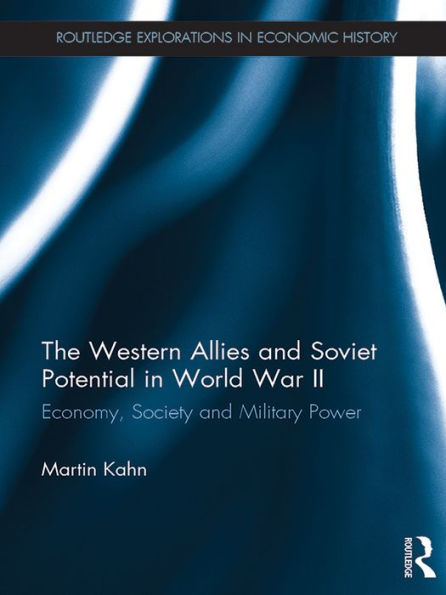World War II was the largest and most devastating war in modern history with far-reaching consequences. The single most important campaign was the Soviet–German war, which consumed the lion share of Germany’s military resources. In contrast to the tone in German and Anglo-American precampaign assessments, the USSR ws able to repulse the invasion after huge losses and turn the table on Germany and her minor Axis allies.
This book examines how the two most important Western Allies in World War II, the United States and the United Kingdom, assessed the economic and military potential of the Soviet Union in 1939–1945. Since the USSR was the single most important military contributor to the Allied victory in Europe, and the main target of Germany’s military strength, these assessments are of paramount importance in order to understand how the Anglo-Americans perceived the overall war situation and adjusted their own war effort in accordance with it. Utilising a wide range of documents produced by the Anglo-Americans during and shortly before World War II, this book explores why Soviet strength was underestimated, and how the Soviet economic system, Soviet society and military capabilities were viewed by Western Government observers.
The Western Allies and Soviet Potential in World War II is a fascinating read for those in academia studying economic history, international economics and security studies, especially areas on military and strategic.
World War II was the largest and most devastating war in modern history with far-reaching consequences. The single most important campaign was the Soviet–German war, which consumed the lion share of Germany’s military resources. In contrast to the tone in German and Anglo-American precampaign assessments, the USSR ws able to repulse the invasion after huge losses and turn the table on Germany and her minor Axis allies.
This book examines how the two most important Western Allies in World War II, the United States and the United Kingdom, assessed the economic and military potential of the Soviet Union in 1939–1945. Since the USSR was the single most important military contributor to the Allied victory in Europe, and the main target of Germany’s military strength, these assessments are of paramount importance in order to understand how the Anglo-Americans perceived the overall war situation and adjusted their own war effort in accordance with it. Utilising a wide range of documents produced by the Anglo-Americans during and shortly before World War II, this book explores why Soviet strength was underestimated, and how the Soviet economic system, Soviet society and military capabilities were viewed by Western Government observers.
The Western Allies and Soviet Potential in World War II is a fascinating read for those in academia studying economic history, international economics and security studies, especially areas on military and strategic.

The Western Allies and Soviet Potential in World War II: Economy, Society and Military Power
356
The Western Allies and Soviet Potential in World War II: Economy, Society and Military Power
356eBook
Related collections and offers

Product Details
| ISBN-13: | 9781317403968 |
|---|---|
| Publisher: | Taylor & Francis |
| Publication date: | 03/27/2017 |
| Series: | Routledge Explorations in Economic History |
| Sold by: | Barnes & Noble |
| Format: | eBook |
| Pages: | 356 |
| File size: | 1 MB |
